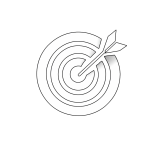Module 6: Pedagogy and Instruction
 Module 6 Outcomes
Module 6 Outcomes
Providing full access to general education curriculum for students with disabilities is paramount in schools today as high stakes-testing and increased student and teacher accountability are receiving greater attention. A comprehensive instructional approach must consider the needs and varying abilities of students in the classroom. To ensure that all students have access to, and progress in general education curriculum, as required by Public Law (PL) 108-4461, using the Universal Design for Learning (UDL)2 structure in combination with differentiation, accommodations and modifications will ensure that all students have the maximum opportunity to meet and or exceed learning outcomes.
This chapter will focus on how UDL and differentiation help teachers to develop and execute lessons that allow students with individual differences and diverse cultures to learn in such a way that they are able to meet lofty standards and reach expected learning outcomes.
Knowledge. The teacher understands and identifies differences in approaches to learning and performance and knows how to design instruction that uses each learner’s strengths to promote growth.
Knowledge. The teacher understands that learners bring assets for learning based on their individual experiences, abilities, talents, prior learning, and peer and social group interactions, as well as language, culture, family, and community values.
Disposition. The teacher believes that all learners can achieve at high levels and persists in helping each learner reach his/her full potential.
Knowledge. The teacher knows how to apply a range of developmentally, culturally, and linguistically appropriate instructional strategies to achieve learning goals.
Knowledge. The teacher knows when and how to use appropriate strategies to differentiate instruction and engage all learners in complex thinking and meaningful tasks.
Knowledge. The teacher knows how to use a wide variety of resources, including human and technological, to engage students in learning.
Knowledge. The teacher knows when and how to adjust plans based on assessment information and learner responses.
Knowledge. The teacher knows when and how to access resources and collaborate with others to support student learning (e.g., special educators, related service providers, language learner specialists, librarians, media specialists, community organizations).
Disposition. The teacher believes that plans must always be open to adjustment and revision based on learner needs and changing circumstances.
